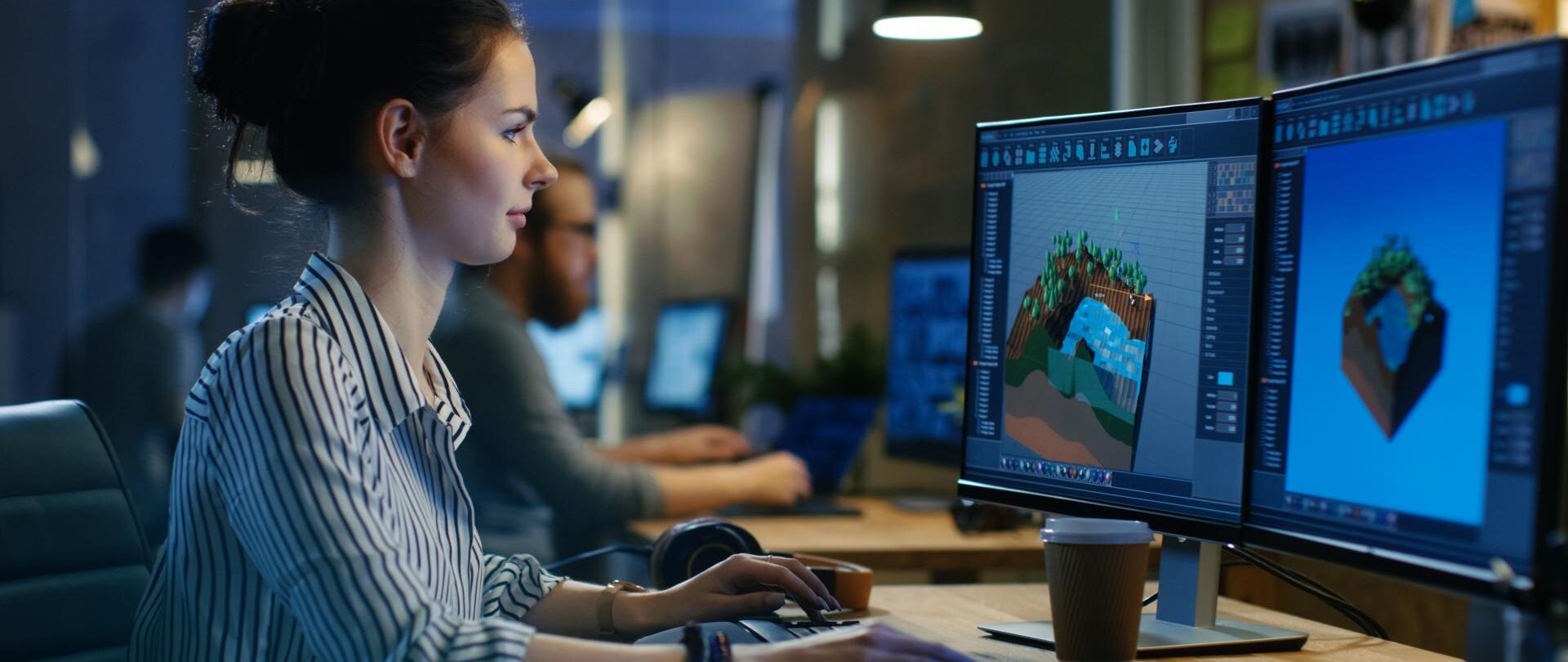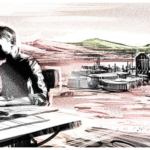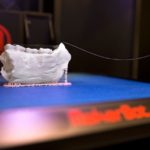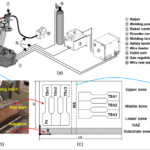
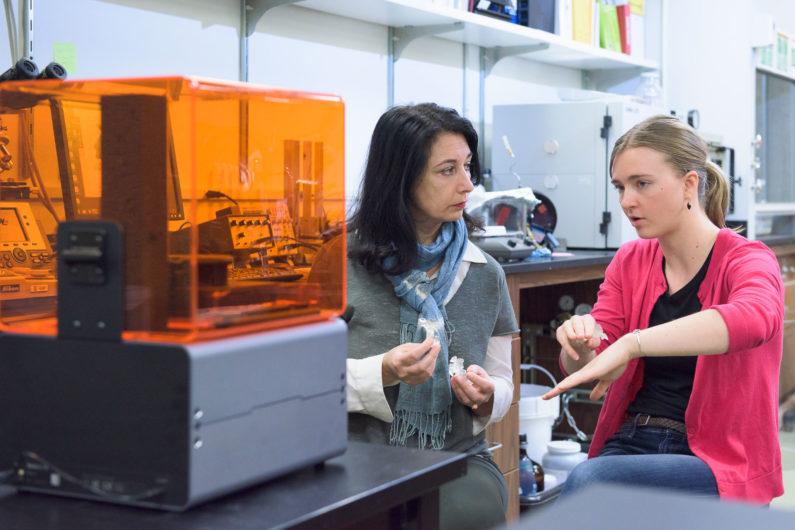
We’ve written a great deal about the use of 3D scanning and printing in archaeology. Scientists have found it a helpful tool for reproducing specimens that are too delicate to handle or for scaling up tiny fossils so that they can be seen more clearly. Increasingly sophisticated and portable scanning technology is making this kind of work possible – but scientists at Stanford University want to take the technology to the next level.
In a new study entitled “Effects of changes in rock microstructures on permeability: 3-D printing investigation,” Stanford researchers discuss the possibility of using 3D printing to study rocks from far away – very far away. With a new technology that combines 3D printing and remote 3D imaging, the scientists believe that they can eventually create replicas of rocks from as far away as the moon or Mars.
“You could use 3-D printed digital rock models to help screen and select the most scientifically interesting samples to return to Earth for research,” said Tiziana Vanorio, an assistant professor of geophysics at Stanford’s School of Earth, Energy & Environmental Sciences. “Our study provides a first step in that direction.”
The technology isn’t quite at the point of 3D printing rocks from Mars yet, but there’s a lot that it’s already capable of. Geologists have used 3D printing to reproduce rock samples for the same reason that archaeologists use it to study fossils: to scale up tiny details or examine specimens to delicate to handle. The Stanford researchers believe that it can also be used to study the actual properties of rocks, such as porosity and permeability, and how they are affected by changes to a rock’s microscopic structure due to compaction or dissolution.
“The advent of modern 3-D printing provides an unprecedented opportunity to link the micro- and macro-scales by combining the strengths of both digital and laboratory experiments,” Vanorio said. “Three-D printing allows us to digitally manipulate changes at the pore scale and then print the rock at the scale that is suitable for laboratory tests.”
By studying changes to the microstructures of rocks, researchers can learn more about how the rocks were formed, as well as how fluids move through them.

“No one else has done what we did, which is digitally modify parts of a natural rock microstructure and then physically measure in a laboratory how those changes affect fluid flow in the rock,” said doctoral candidate Dulcie Head, who works in Vanorio’s lab.
The newly released study details how Vanorio and Head scanned a small carbonate rock sample and then tested two different SLA 3D printers – a desktop printer from Formlabs and an industrial 3D Systems ProJet printer at the university’s Technique Refinement and Innovation Lab – to see if they could recreate the microscopic hollows and channels in the rock. The ProJet ultimately won for its high print resolution, recreating the rock’s pores in minute detail.
Once they were assured that the microstructures of the rock could be reproduced by a 3D printer, Vanorio and Head digitally manipulated the 3D model to simulate structural changes, then 3D printed the altered model. The process could allow scientists to directly link microstructural changes to properties like porosity and permeability for the first time.
“A fundamental problem for geophysicists who want to understand rock properties is that our samples are not naturally comparable,” Head explained. “You can take two rock cores from right next to each other that have very similar bulk properties, but when you look at them under a microscope, their pore structures might be completely different. By manipulating something that we couldn’t manipulate before, 3-D printing allows us to understand the role of those tiny differences in the pore structure.”
Head and Vanorio are hoping that 3D printing technology will advance further and allow them to reproduce even finer details, as well as combining materials to more closely replicate the mixture of materials that make up natural rocks. Interestingly, it was a pair of shoes that inspired Vanorio to look into 3D printing rock samples.
“The company used a digital scanner to determine the exact size and shape of your feet and then 3-D printed shoes that fit you like a glove,” she said. “Geophysicists already digitally scan rocks, so I thought to myself ‘Why not print them, too?’”
Why not, indeed. Next step – the moon! What do you think? Discuss further in the 3D Printed Rocks for the Moon & Mars forum over at 3DPB.com.
[Source: Stanford News]
If you're looking for affordable 3D visualization services in the USA, our platform provides an ideal solution for all your architectural and real estate needs. Through our service, you can access high-quality 3D renderings at competitive prices without compromising on quality. Whether you need interior visualizations, exterior renderings, or architectural animations, our team ensures that you get professional results that fit within your budget. With our support, you can make your projects visually stunning while saving on costs, all with a quick and straightforward process.
Through our site, you can easily order affordable 3D visualizations for your projects, whether for a residential property, commercial development, or architectural design. We understand the importance of staying within budget, and that's why we offer tailored solutions to ensure you get the best value for your investment. Our experts work efficiently to provide you with realistic, photorealistic 3D images that will elevate your presentations and attract clients, making your property stand out in the market.

